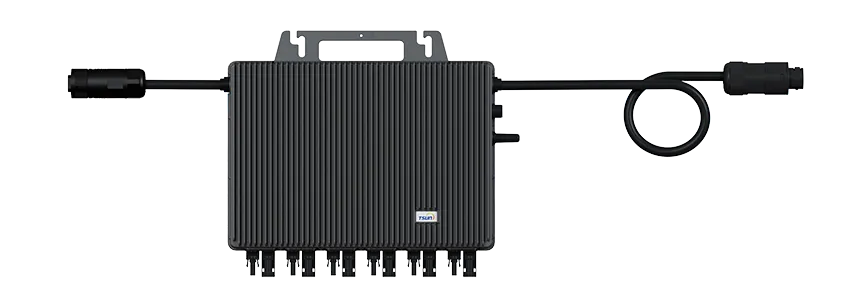Harnessing the power of the sun has become more crucial as the world shifts towards sustainable energy solutions. At the heart of this solar revolution is the micro inverter, a key component that optimizes the conversion of solar energy into usable electricity. While the traditional string inverter model is widely used, the micro inverter offers unique advantages that are increasingly pivotal in maximizing solar panel efficiency and reliability.

A micro inverter reference design can be the linchpin for innovators looking to enhance the capabilities of solar technology. Understanding the critical aspects of this design involves exploring the component's real-world applications, technical intricacies, and developmental trends.
Micro inverters distinguish themselves by their ability to provide panel-level conversion, which allows each solar panel to operate independently. This is especially beneficial in installations where shading, debris, or panel orientation can affect performance. Unlike string inverters, which depend on the performance of a single string of panels, micro inverters optimize output for each individual panel. This granular level of management ensures that assets are used efficiently, and energy yield is maximized.

From an expertise standpoint, developing a robust micro inverter reference design requires a deep understanding of electrical engineering and semiconductor technologies. A standard design includes components like the DC-DC converter, which modulates the electricity generated by individual panels; an MPPT (maximum power point tracking) component that maximizes energy harvest; and a communication interface that enables real-time monitoring and management of the panels' output.
The technical expertise needed to improve these components can lead to better designs and improved performance in energy conversion efficiency, which typically sits between 95-98%. Engineers and developers focus on reducing energy losses through advanced circuitry and innovative semiconductor materials. Additionally, the incorporation of IoT (Internet of Things) technology allows better data collection and remote management, essential for large scale solar installations.
On a larger scale, the authority of a micro inverter design is recognized through its compliance with industry standards and certifications, such as the IEC 62109 for safety and UL 1741 for inverters and power converters. These standards assure users of reliability and safety while simultaneously certifying the design's market readiness.
micro inverter reference design
Trustworthiness in micro inverter technology also hinges on the reliability and longevity of the product. A critical factor that customers consider is the warranty period, which for micro inverters typically ranges from 10 to 25 years. This far exceeds that of string inverters, highlighting their durability and the confidence of manufacturers in their products.
With the global renewable energy landscape evolving, market trends indicate a rapid increase in the adoption of micro inverters. Emerging markets are embracing decentralized energy systems more frequently, opting for flexibility, which micro inverter systems provide. This trend is not only pushing the boundaries of current reference designs but also encouraging the integration of energy storage systems that enable users to store excess production for later use, further enhancing grid efficiency.
For product developers, a strategic approach involves leveraging experience from existing installations, focusing on the iterative refinement of designs based on performance feedback. Collaborating with academic institutions and research bodies can also yield innovative ideas that push current knowledge boundaries.
Finally,
the ecologically sustainable nature of micro inverters offers an intrinsic value proposition. By contributing to the reduction of carbon footprints and facilitating a cleaner energy source, this technology aligns with global sustainability goals and positions itself as a critical component in the green energy transition.
In conclusion, innovation in the micro inverter reference design is integral to advancing solar technology capabilities. Through a focus on individual panel optimization, durability, and audience trust, this technology offers substantial benefits for anyone looking to invest in or develop sustainable energy solutions.
 LEARN DETAILS
LEARN DETAILS



